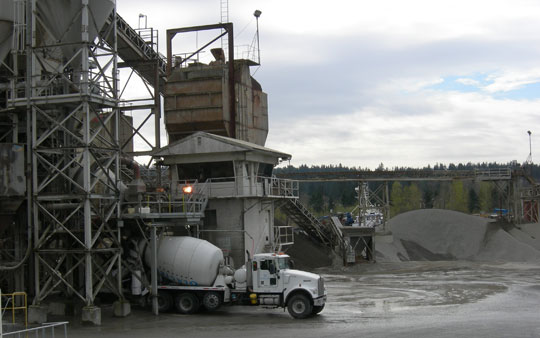Germany produces cement 'green'
Cement production is the biggest 'culprit' of global greenhouse effect. About 5% of the world's carbon dioxide emissions come from cement kilns, twice the amount of emissions from jet engines of the entire civil aviation industry.

A cement factory. (Photos are illustrative. Internet source)
The problem lies in the chemical mechanism of cement production, 2 times of CO2 generation. First, calcium carbonate (CaCO 3 ) is present in finished limestone that is heated in an oven at a temperature of over 1,400 degrees Celsius. This process consumes a lot of energy, often using coal. After that, another round of CO 2 was released when CaCO 3 became CaO. In total, producing 1 ton of cement releases 770 kg of CO 2 into the air.
Unlike some companies that choose to make CO 2 smoked cement to balance the production of carbon dioxide before, Karlsruhe Institute of Technology (Germany) has found a way to reduce the fuel needed for production as well as The amount of CO2 released during the next process.
According to the introduction of chemist Peter Stemmermann , cement called Celitement in the first phase only needs to be heated at 300 degrees Celsius. more, Stemmermann's cement changed the chemical reaction chain and reduced the amount of carbon dioxide released.
Celitement's biggest drawback is its high cost, but in return this cement is both ' green ' and durable, resisting erosion better than conventional cement. Currently, Schwenk Company (Germany) is cooperating with experts to open Celitement cement factory, with a design capacity of 66,000 tons / year in 2014.
- Future iPhone made from cement?
- Novacem Cement will replace Portland cement?
- Green cement
- The formula makes the new type of cement reduce the amount of CO2
- Cement is smart to withstand both bombs
- Scientists first made cement in the universe
- Ash replacement cement
- Radiation protection cement
- Mexican doctor invented luminescent cement with a lifespan of over 100 years
- Transparent materials replace cement in the future
- Build solid houses from clay
- Cement holds safe nuclear waste for 100,000 years
 Is the magnetic North Pole shift dangerous to humanity?
Is the magnetic North Pole shift dangerous to humanity? Washington legalizes the recycling of human bodies into fertilizer
Washington legalizes the recycling of human bodies into fertilizer Lightning stone - the mysterious guest
Lightning stone - the mysterious guest Stunned by the mysterious sunset, strange appearance
Stunned by the mysterious sunset, strange appearance